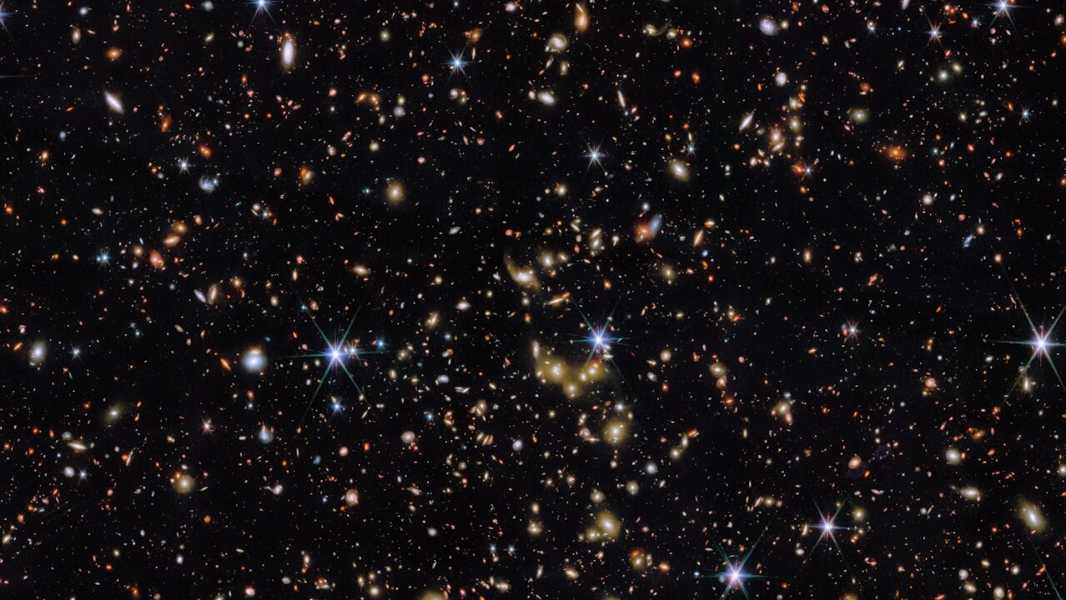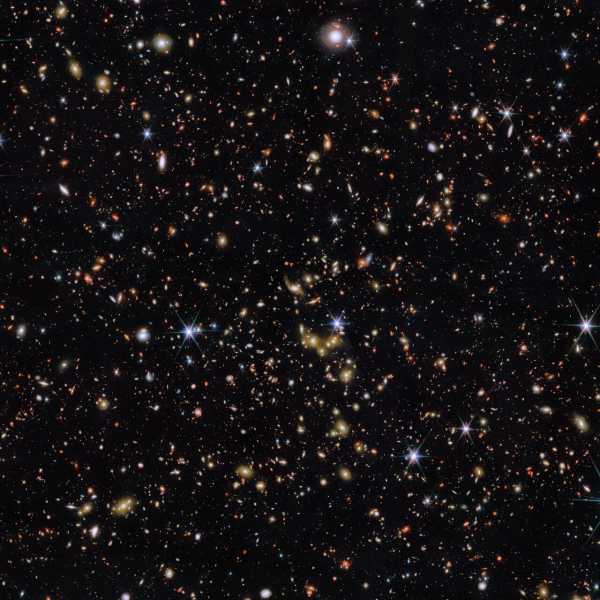
The latest image from the Webb telescope reveals galaxies billions of light-years away. (Image credit: ESA/Webb, NASA & CSA, G. Gozaliasl, A. Koekemoer, M. Franco and the COSMOS-Web team)
What it is: Thousands of galaxy groups from the early universe.
Location: 12 billion light years away in the constellation Sextans.
When published: April 29, 2025.
Why it matters: The constellation Leo, opposite the part of the night sky that points away from the Milky Way and toward the distant reaches of the universe, is known to astronomers as the realm of galaxies. Observations by the James Webb Space Telescope (JWST) have revealed some surprising new details. In the tiny constellation Sextans, JWST has discovered clusters of galaxies up to 12 billion light-years from Earth. Given that the universe is 13.8 billion years old, these galaxies belong to the early years of its existence.
Just as gravity causes moons to orbit planets, planets to orbit stars, and stars to orbit the centers of their galaxies, galaxies themselves also orbit each other, creating gravitationally bound groups, according to NASA. This largest sample of 1,678 galaxy groups helps astronomers understand what the early universe was like and how it has changed over the past 12 billion years.
Galaxies that existed in the early Universe were irregularly shaped and made up of many stars, while galaxies that formed later appear more symmetrical and structured, with elliptical and spiral shapes – like our Milky Way.

Uncropped version of the image.
“Like humans, galaxies form groups and create families,” said Ghassem Gozaliasl, an astronomer at Aalto University who led the group that discovered the galaxy groups and is the lead author of the results, which have been accepted for publication in the journal Astronomy and Astrophysics, in a statement. “Groups and clusters are important because they are where galaxies can interact and merge, changing their structure and morphology.” In these galaxies, astronomers can also study dark matter, supermassive black holes, and the gas between the galaxies.
NASA has a rich history of using its space telescopes to take “deep field” images of the universe. The first of these, the Hubble Deep Field, was taken in 1995 and included about 3,000 distant galaxies. The addition of a new camera in 2002 led to the even more impressive Hubble Ultra Deep Field in 2004, which revealed nearly 10,000 galaxies, according to NASA.
Sourse: www.livescience.com





